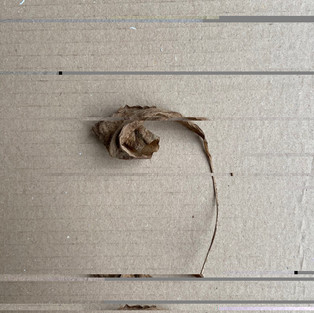Breaking Imagery
- Ryan Pilkington
- Mar 14, 2021
- 3 min read
Updated: May 5, 2021

For the first experiment during the workshop lead by Steven Calcutt, we experimented with our first look into code and how images are built up using the computer language. Using a free software called Hex Editor or Hex Fiend we experimented with breaking this code. This process was called Data Moshing.
The glitch aesthetic is something that I remember as being popular during my Bachelor's degree and one that I have seen a reappearance of through channels such as Instagram as a response to the ever-increasing technological world we live in and our dependence on it. Although this aesthetic can be achieved through design software such as Photoshop and Illustrator by using ‘actions’ that apply a skin to any design, there seems to be an authenticity to generating this design aesthetic through altering the code that builds the image.
After taking the careful steps to duplicate an image we would like to break and experiment with and opening it in the Hex software, we began the repetitive cycle of tasks that generate a collection of increasingly glitched imagery. Using a numbering system starting with 001, 002, 003 and so on, we duplicated the image we had just worked on and continued to break the code inside and repeated this process. For the first image, I tried one of my recent poster layouts from a workshop response from the professional Platforms Art and Communication module which was a PNG file. Although the Hex software has the ability to read PNG images, it proved rather tricky to break this image in a way that did not simply delete most of the image. In the images within this blog post, you can see the responses to the broken code, where a process of both deleting areas of code and duplicating others. Although a glitch has appeared, I was not satisfied with most of the responses as it simply deleted most of the original image. Through discussions in the workshop, Steven mentioned that JPEG files are formatted better for Data Moshing and are rather more robust within this kind of destruction. I then experimented with one of the JPEG images that were a response from the studio workshop we had undertaken weeks before.
The JPEG appeared to respond better to the Data Moshing where copying and deleting various areas of the code generated glitches within the image. Although subtle, this process is fast and could allow for quick experimentation with imagery. It could be interesting to see how this process could manipulate imagery to achieve a glitch aesthetic for media such as posters where imagery becomes of the largest focal points, where each area of Data Moshing could be visible. It could be interesting to experiment with how this process and the resulting imagery could become motion graphics where the image appears to deteriorate through the duration of the video. My only concern with this process was the inability of Photoshop to open any of the resulting imagery, although the native Mac Preview application could. How would this affect the graphic responses? Or could this in fact aid in the aesthetic if the images become rather pixelated and rough by having to find other methods to import the imagery into the desired software such as screenshot as one example.
Although this may not be the area of experimentation that I will use straight away in my practice, I will be keeping this process in mind for future projects where this could truly become a useful tool for a certain aesthetic or narrative.
JPEG
PNG
Data moshing:



























































Comments